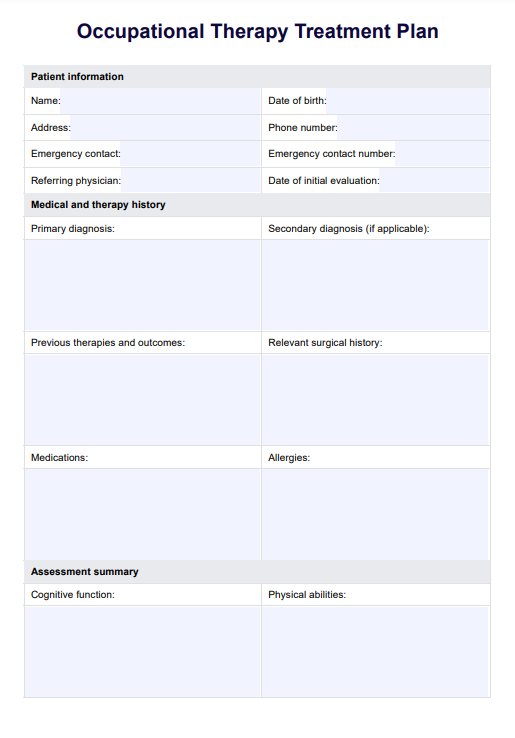Occupational therapy (OT) helps individuals of all ages engage in the activities they want and need to do by therapeutically using daily activities or occupations.

Occupational Therapy Treatment Plan
Streamline treatment planning in your practice with our Occupational Therapy Treatment Plan.
Use Template
Occupational Therapy Treatment Plan Template
Commonly asked questions
Individuals of any age facing physical, cognitive, or emotional challenges that affect their ability to perform everyday activities can benefit from occupational therapy. This includes people recovering from injuries, living with chronic health conditions, or experiencing developmental or psychological difficulties.
Plans are tailored and adjusted over time, with some lasting a few weeks to several months or even longer for ongoing self-care and support.
EHR and practice management software
Get started for free
*No credit card required
Free
$0/usd
Unlimited clients
Telehealth
1GB of storage
Client portal text
Automated billing and online payments











